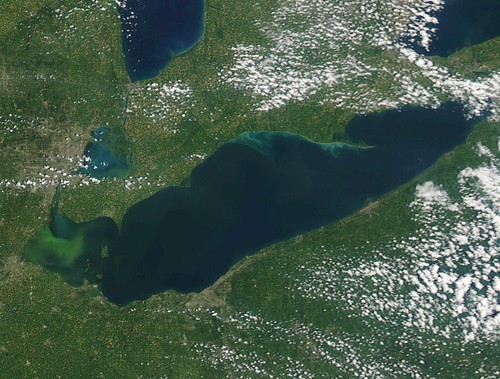How does that work?
Theoretically, invasive mussels like the zebra and quagga are so amazing at filtering water that they aren't just filtering the toxins from their local environment. Rather, they're filtering toxins and phosphorous from the whole lake and as it flows out of rivers and sequestering a high percentage of it in their bodies.
Zebra and quaggas living near a tributary or near the shore take up a high percentage of the wastes flowing into the lake, and that toxin isn't diluted like it would have been...instead it's taken up into the mussels' bodies. When they excrete wastes or when they die, they leave behind concentrated levels of lake toxins near the shorelines.
A new study suggests that this is, in fact, happening. At least with phosphorous. And phosphorous is a chemical responsible for algae blooms and ecological dead zones.
According to this so-called nearshore shunt hypothesis, the bivalve invaders absorb phosphorus when they feed on plankton and other microorganisms, and then they excrete any excess phosphorus into the sediment. Since the mussels capture phosphorus as it enters the lake from rivers, they sequester the nutrient along the lake's shallow shoreline, preventing it from reaching the rest of the lake.
[snip]
According to the scientists' model, the proportion of incoming phosphorus retained near the shore increased from 46 to 70% after the mussel invasion. Because Saginaw Bay supplies as much as 40% of Lake Huron's annual phosphorus, the bay's drop in phosphorus export could partially explain why lake phosphorus levels are so low, Stow says.
The study presents "the most convincing case" that invading mussels may intercept phosphorus in the Great Lakes and redirect it to nearshore waters,
Incoming phosphorous increased from 46% t0 70% after the mussel invasion.
I take you once again to an annually occurring algae bloom in Lake Erie visible from space....one that we thought we had taken care of for almost thirty years when we started taking steps to reduce farm runoff and reducing phosphorous levels in the lake. The bloom returned in 1995, after the invasion of the zebra mussels. There's no directly proven correlation between this algae bloom and zebra mussels at this time...but we're certainly making a first step toward solving the mystery of why we're seeing algae blooms again even though we've successfully reduced phosphorous levels in the lakes.

No comments:
Post a Comment